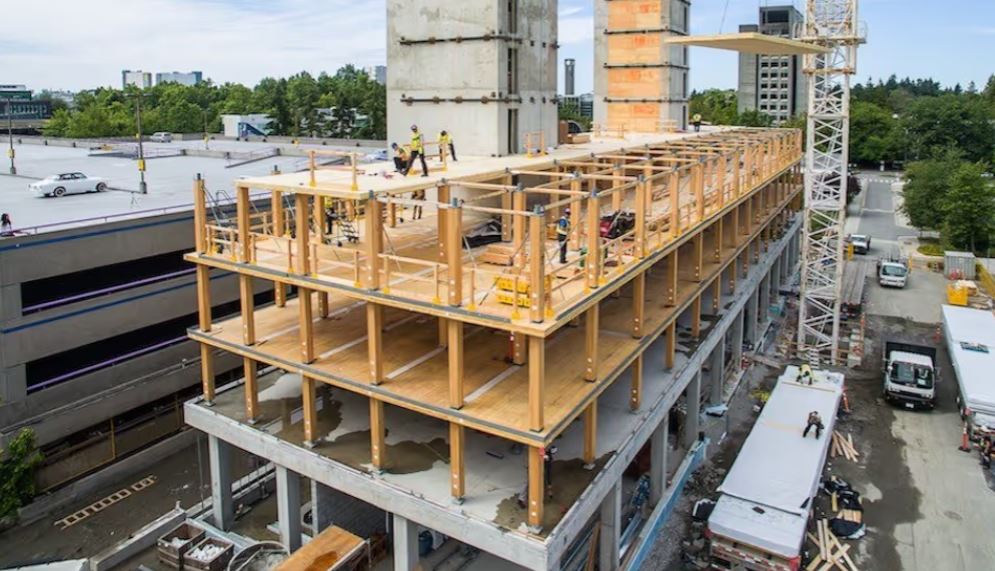
In a significant stride toward sustainable urban development,
British Columbia¡¯s provincial government is poised to
revolutionize its construction landscape by amending the BC
Building Code. The proposed changes aim to substantially elevate
the utilization of mass timber in high-rise buildings, marking a
progressive shift towards environmentally conscious and
innovative construction practices.
At present, provincial regulations limit mass timber buildings
to a height of 12 storeys. However, the forthcoming amendments
are set to amplify this threshold to 18 storeys, a remarkable
50% increase. This monumental decision is not only set to apply
to residential buildings but also extends its reach to encompass
office spaces, schools, shopping centers, and industrial
facilities.
Ravi Kahlon, BC Minister of Housing, expressed enthusiasm for
the proposed alterations, emphasizing their alignment with
initiatives aimed at facilitating increased housing near transit
hubs. Kahlon highlighted that the changes not only encourage
taller buildings but also promote sustainability, reduce carbon
emissions, bolster the forestry sector, generate employment
opportunities, and pave the way for more vibrant and healthier
communities.
¡°These proposed mass timber building code changes align with our
recent work to deliver more homes near transit hubs by allowing
taller buildings and more sustainable housing options near
transit,¡± says Kahlon.
The forthcoming amendments also promise more flexibility in
design, permitting increased exposure of mass timber or reduced
encapsulation based on a building¡¯s height. Such tailored
regulations showcase a keen understanding of safety standards
while fostering innovation within the construction sector.
Hybrid designs, blending wood with concrete for foundational and
core structural elements, underscore the province¡¯s commitment
to seismic safety. This pragmatic approach ensures structural
integrity while incorporating the environmental benefits and
innovation associated with mass timber construction.
One crucial aspect emphasized in these proposed changes is the
safety of mass timber buildings. Advocates and researchers
assert that these structures do not pose a greater fire hazard
compared to steel buildings. The charred wooden surfaces act as
a protective layer, preserving the structural integrity beneath.
Additionally, the prefabricated nature of these materials
expedites construction timelines and ensures efficiency.
Moreover, the environmental advantages of embracing mass timber
construction cannot be overstated. Reduced emissions, fewer
construction truck trips, and shorter construction timelines
align with the province¡¯s sustainability goals, signalling a
paradigm shift in the construction industry.
Source: settingmind.com